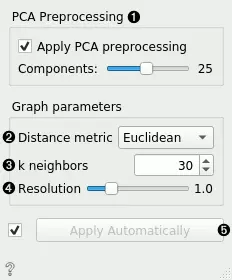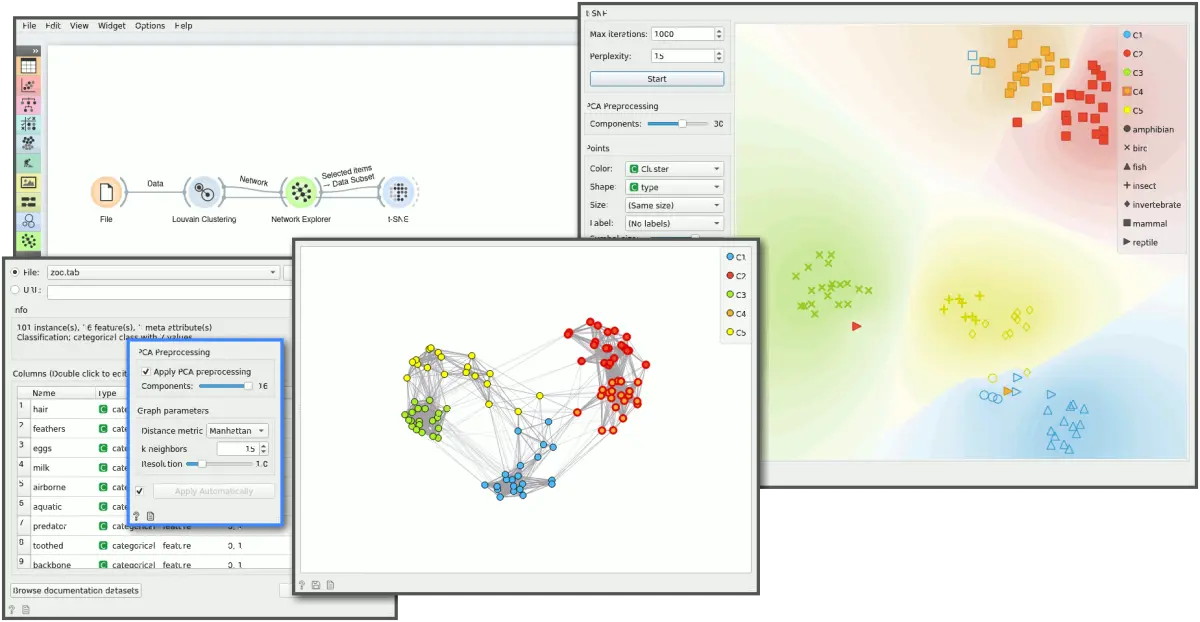Louvain Clustering
Groups items using the Louvain clustering algorithm.
输入
- Data: input dataset
输出
- Data: dataset with cluster index as a class attribute
- Graph (with the Network addon): the weighted k-nearest neighbor graph
功能
The widget first converts the input data into a k-nearest neighbor graph. To preserve the notions of distance, the Jaccard index for the number of shared neighbors is used to weight the edges. Finally, a modularity optimization community detection algorithm is applied to the graph to retrieve clusters of highly interconnected nodes. The widget outputs a new dataset in which the cluster index is used as a meta attribute.
界面

- PCA processing is typically applied to the original data to remove noise.
- The distance metric is used for finding specified number of nearest neighbors.
- The number of nearest neighbors to use to form the KNN graph.
- Resolution is a parameter for the Louvain community detection algorithm that affects the size of the recovered clusters. Smaller resolutions recover smaller, and therefore a larger number of clusters, and conversely, larger values recover clusters containing more data points.
- When Apply Automatically is ticked, the widget will automatically communicate all changes. Alternatively, click Apply.
示例
Louvain Clustering converts the dataset into a graph, where it finds highly interconnected nodes. We can visualize the graph itself using the Network Explorer from the Network addon.

参考文献
Blondel, Vincent D., et al. “Fast unfolding of communities in large networks.” Journal of statistical mechanics: theory and experiment 2008.10 (2008): P10008.
Lambiotte, Renaud, J-C. Delvenne, and Mauricio Barahona. “Laplacian dynamics and multiscale modular structure in networks.” arXiv preprint, arXiv:0812.1770 (2008).
反馈问题
文档有问题? 或者有其他意见和建议? 请在本文档的 Github 仓库直接反馈
点我反馈进入反馈页面不知道如何反馈, 请点击这里